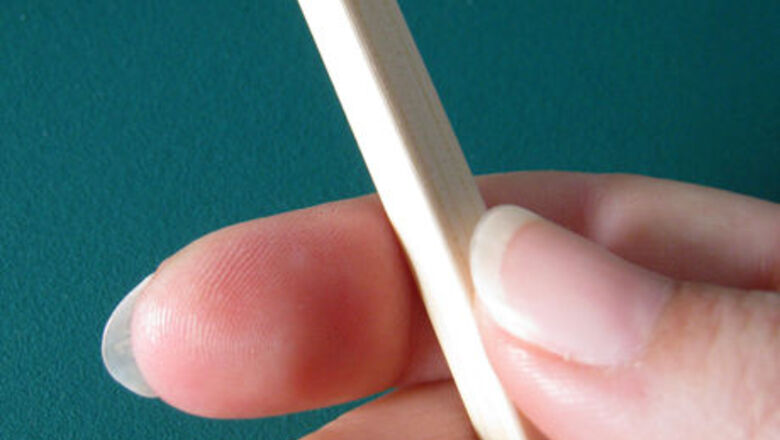
views
- Choose the desired material and length for your hook and then cut your hook to the desired length (or slightly longer).
- Create a rough edge on one end, carve and sand your hook's neck, mark a "smile" where you'll carve your hook, and make a 45 degree cut about halfway through the dowel on your mark.
- Widen and deepen your cut until it's a function hook, sand your hook thoroughly, shape the hook, and test it out with some string.
Select the material you want your hook to be in. You can use a wooden or plastic chopstick, or a hardwood dowel. You can even start with a reasonably straight piece of a branch, for as long as it is well-dried. You will have less carving to do if the material starts with approximately the size and shape you want the finished hook to be, particularly the diameter. If you're using a chopstick, use a good, long one made of bamboo. The cheap, break-apart ones that you typically get with your Chinese takeout probably won't sand to a finish that is smooth enough. Different materials will handle somewhat differently. For instance, wooden and plastic hooks will be different from the commercial metal hooks. Try to experiment to see which ones suit your needs best. See the "Things You'll Need" section below for a list of the other items you'll need.
Decide on the length of the crochet hook. You may wish to compare it to a commercial hook that you like working with. If you're not sure, six inches (15cm) is a good length to start with. You can also base the length of your hook on the type of project you would like to use it on, such as on Tunisian crochet -- which requires a longer hook, or a much bigger project.
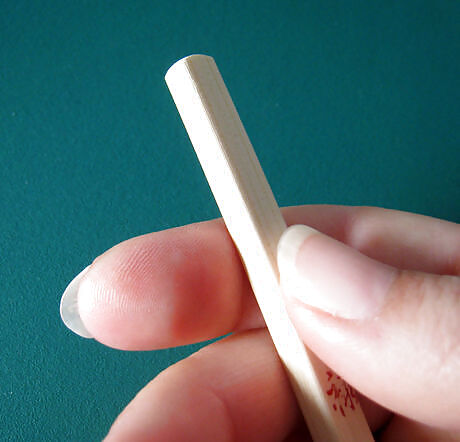
Decide which way you want the hook portion to point in relation to the handle, if you are using material that is not cylindrical (a rectangular chopstick or a rough branch). Is there a flat side? Is one side wider than the other? If you are starting with a chopstick, you might also wish to consider any designs or printing that are already on the chopstick.
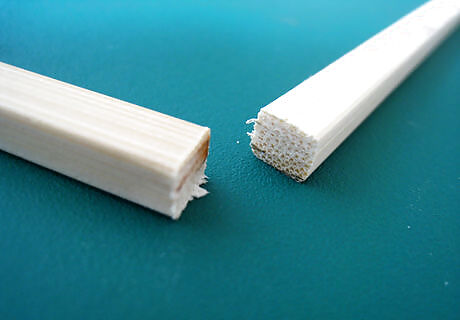
Cut the material to the final length, or a bit longer. Remember that you will be removing some material as you carve, and that you can shorten the hook later far more easily than you can lengthen it. If you prefer, you can leave this step until last, so that you will know exactly where the top of the hook ends up.
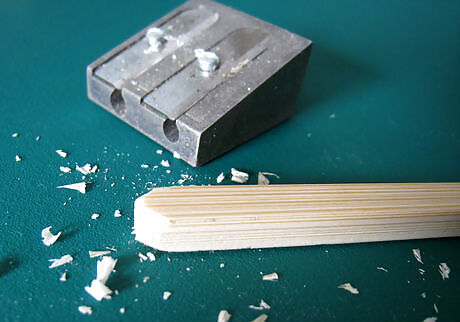
Put a rough point on the end that will become the hook. One easy way to do this is to place the end of the chopstick or dowel into a pencil sharpener. Otherwise, simply use the knife to round the corners.
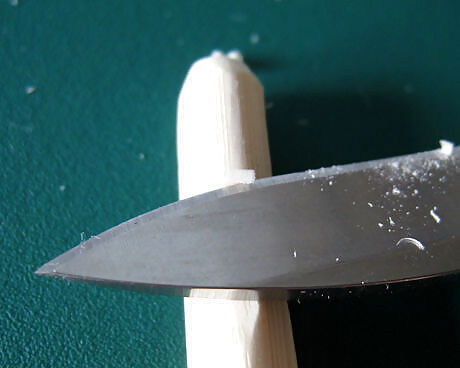
Carve a neck onto the hook. It does not have to be perfectly cylindrical, but you may want to round out the square end of a chopstick. If you want a smaller hook, you may also want to straighten the taper on the end of a chopstick, or reduce the diameter of the hook end of a dowel while leaving the handle part thicker for strength. Make the neck as smooth, even, and symmetrical as possible. Cut with long, smooth strokes following the grain of the wood, and rotate the material as you go. If you are rounding out the end of a rectangular chopstick, take more off the short sides and little or nothing off the long sides. Make the neck at least an inch and a half (about 3.5cm) long. The exact length doesn't matter. If you did shape the end with a pencil sharpener, use the shape of the point as a guide to help get the neck round.

Sand the neck so that it is reasonably smooth and even. This is not the final sanding, so you don't have to go overboard at this stage. Just get out big bumps and nicks left from carving the neck.
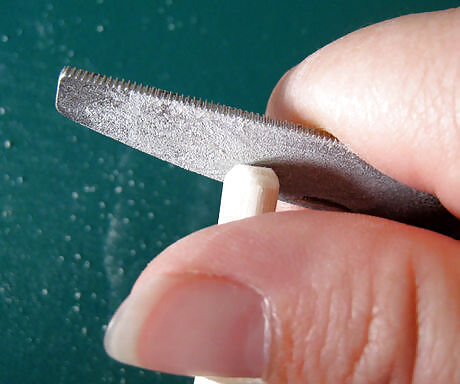
Do a little rough sanding on the end at this stage to round out the tip. It will help you to visualize where to put the cut for the hook.
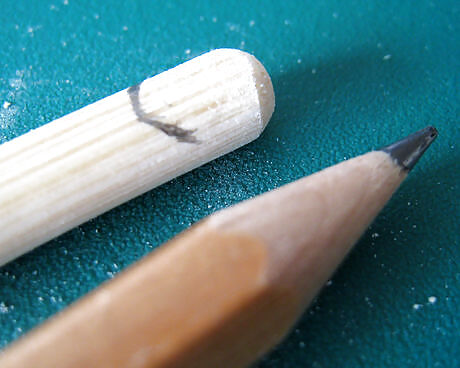
Mark a "smile" where the initial cut for the hook will go. You can also visualize this cut, if you prefer. Put it a little further from the end than it will finally go. You will shape the point of the hook more later. You may wish to compare the shape and location to a commercial hook or a photo of one.
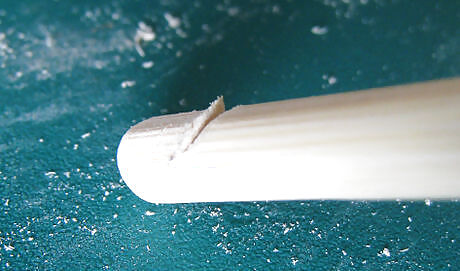
Make a 45 degree cut about halfway through the dowel, at the mark. This will create the beginning of the hook. The photo shows the saw blade on a pocket knife (multi-tool), but you can use any other saw, or you can start this cut by chipping at it with a knife.
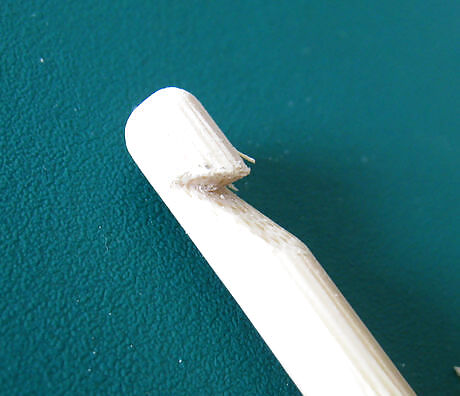
Widen this cut and make it deeper by whittling with a knife. Try to preserve the undercut while you make it deeper. Leave a half to a third of the original width of the dowel at the narrowest spot.
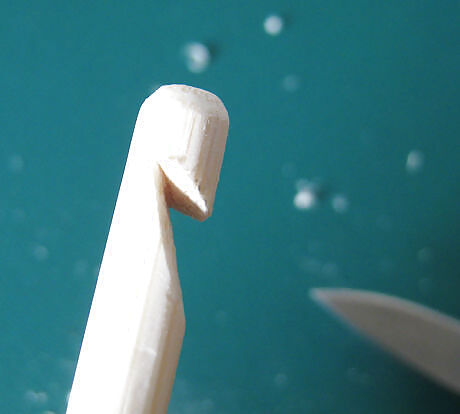
Work the sides of the "smile" higher. This is not strictly required, but it will give the thread or yarn a place to sit. Note that this may make the supporting part of the dowel even slimmer, so don't overdo it, especially on thinner hooks.
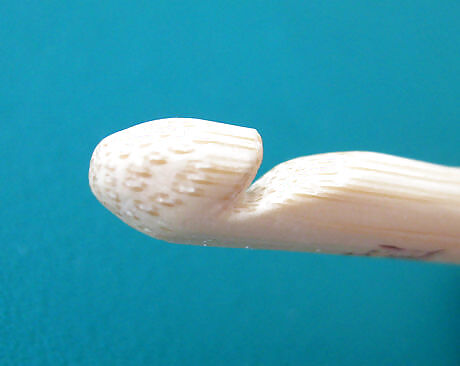
Shape the point and shorten it as required. If the point is too long, you will have trouble pulling it through loops. You may wish to revisit the pencil sharpener if you are using it. Otherwise, simply continue to whittle and sand until you have a round point. Turning the hook as you go will help to keep things even and round here, especially as you are sanding. The shape and size of the point of your hook is a matter of personal preference. Try several different shapes or continue to adjust it until it feels right to you.
Sand the hook thoroughly, especially the hook and the part of the neck that will come into contact with the yarn or thread. As much as possible, sand with the grain of the wood. A flat, inexpensive emery board will help you get in under the hook. Remember that sanding can also be used for the final shaping.
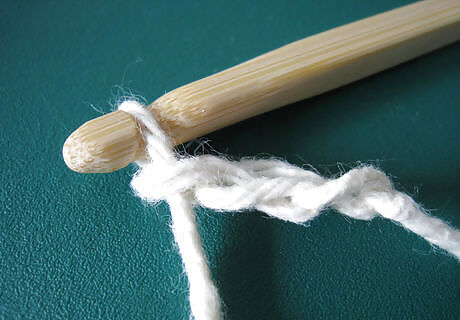
Use the hook. You will quickly discover any spots that need a bit more sanding. Give yourself plenty of time to adjust to wooden hooks if you have used metal hooks before. Also, give them plenty of time to break in. They will get smoother with use, and they will absorb skin oil that will make the hook slide more evenly against the yarn or thread.




















Comments
0 comment